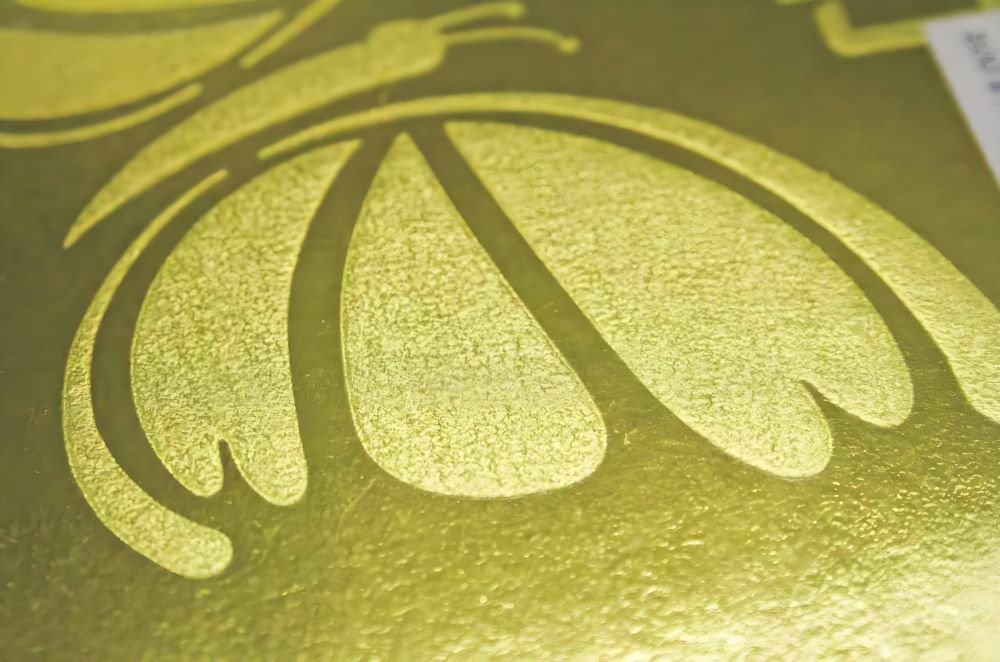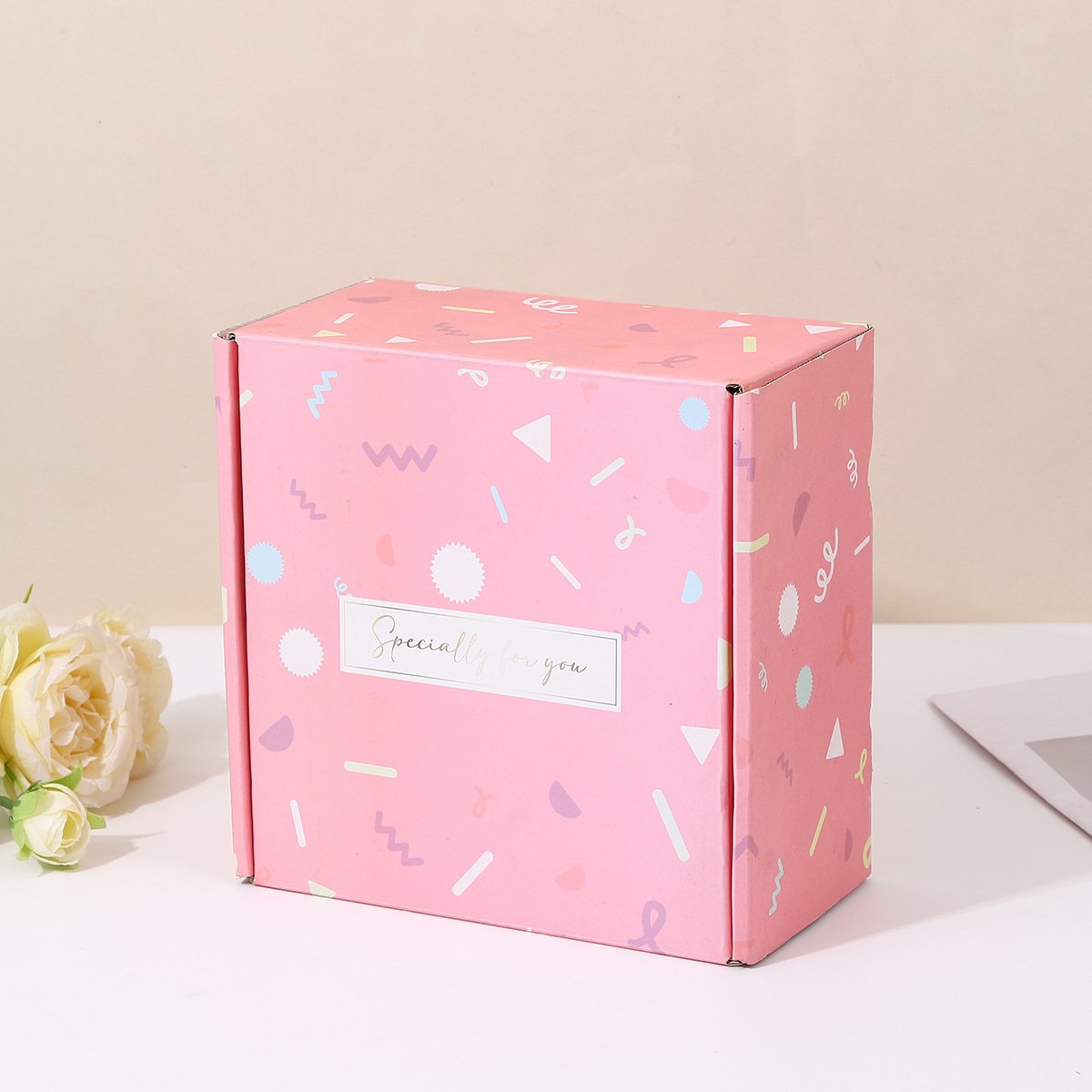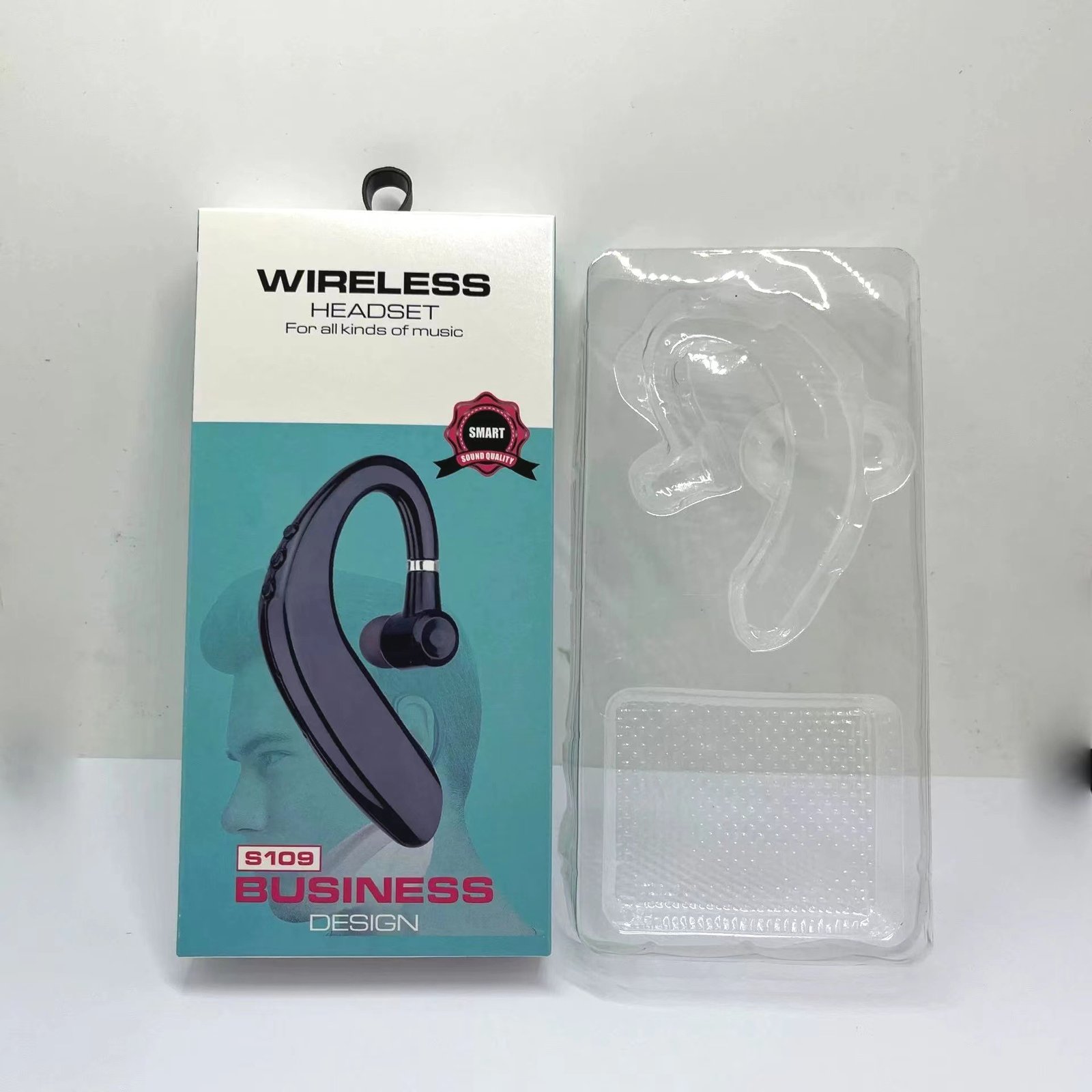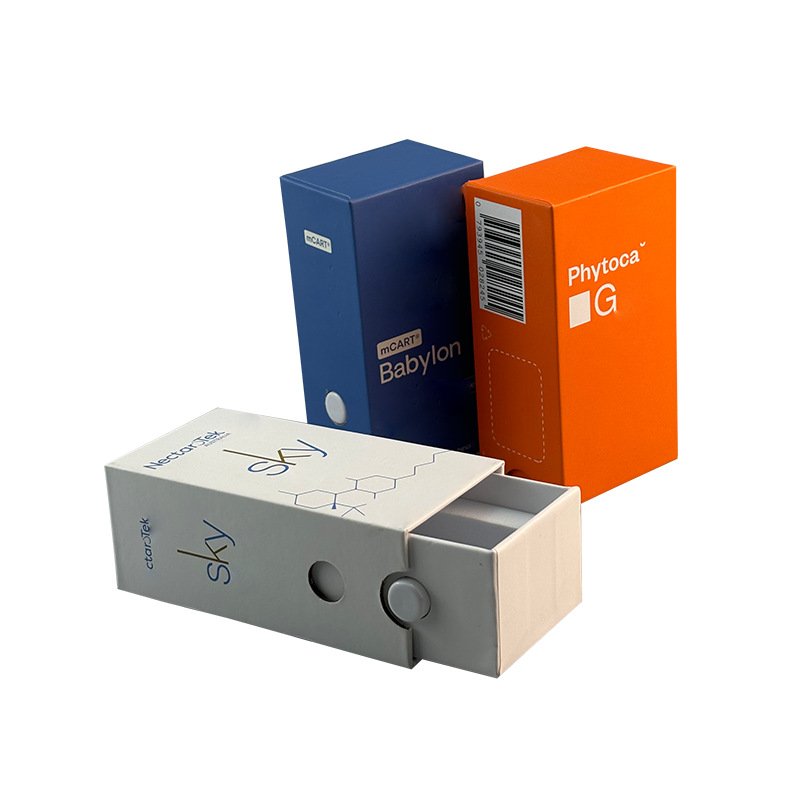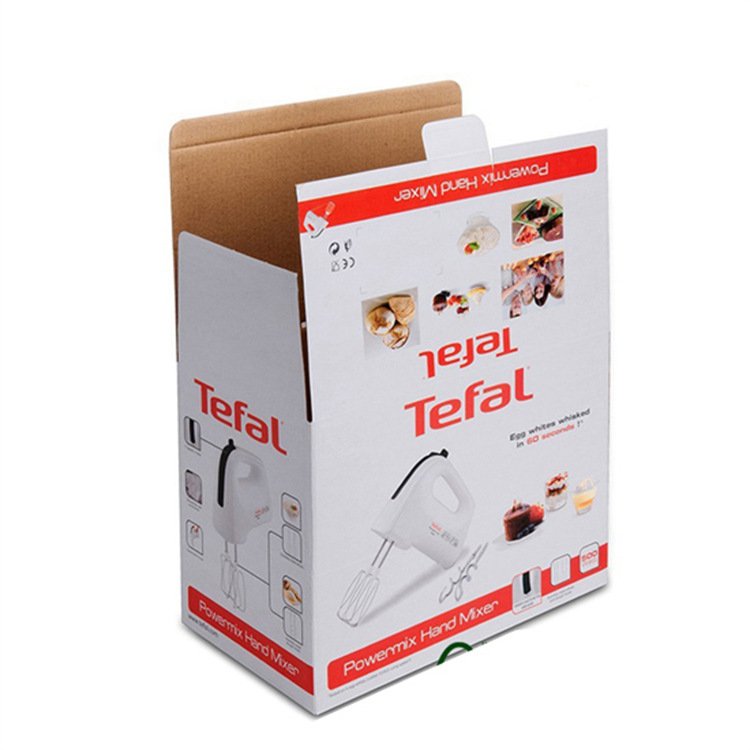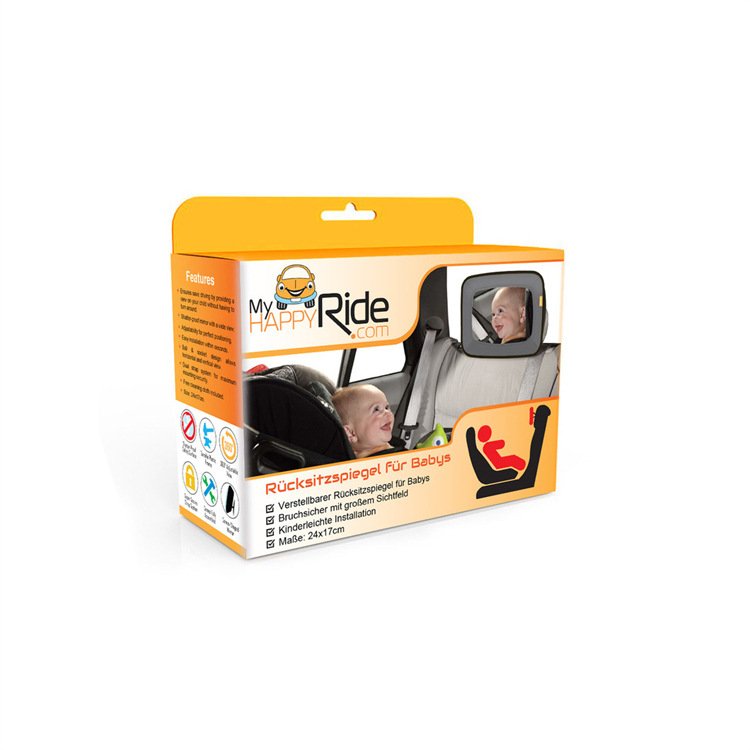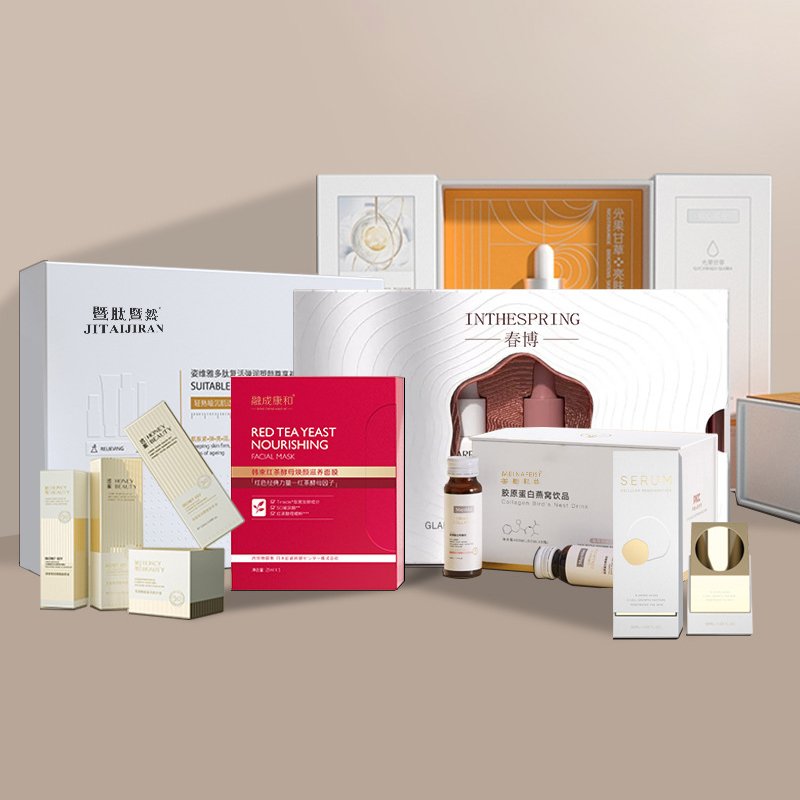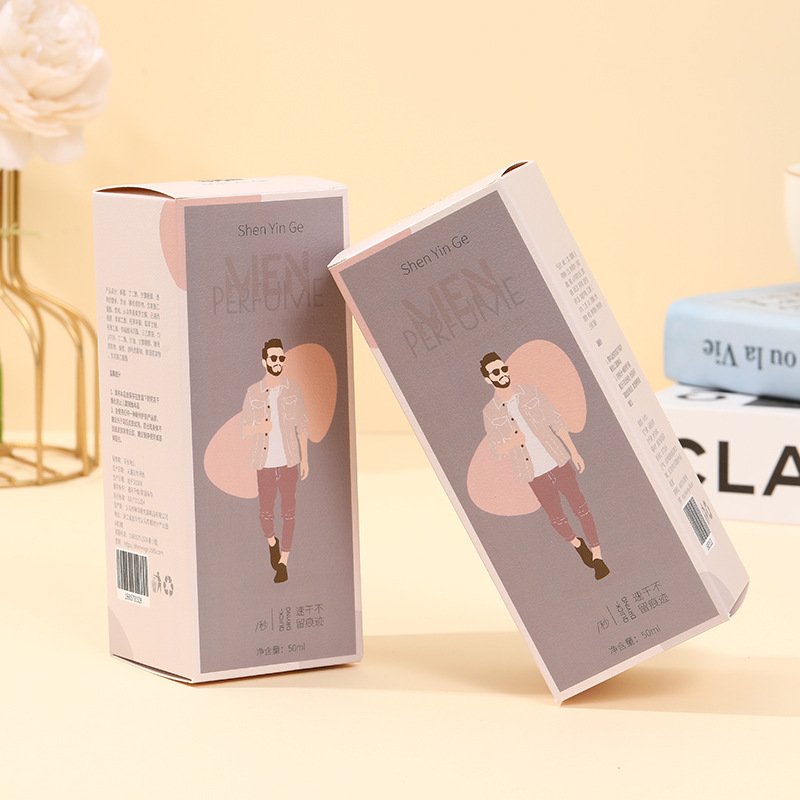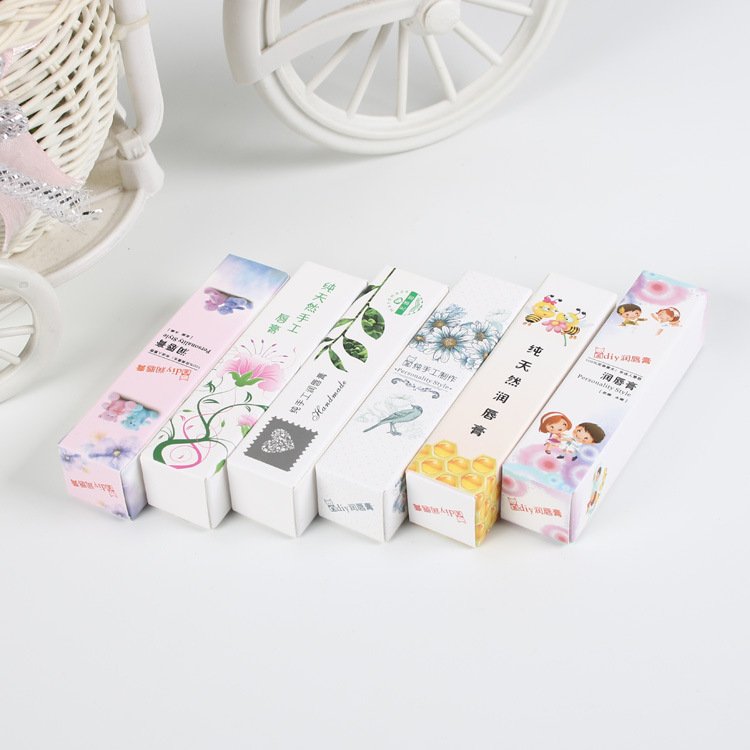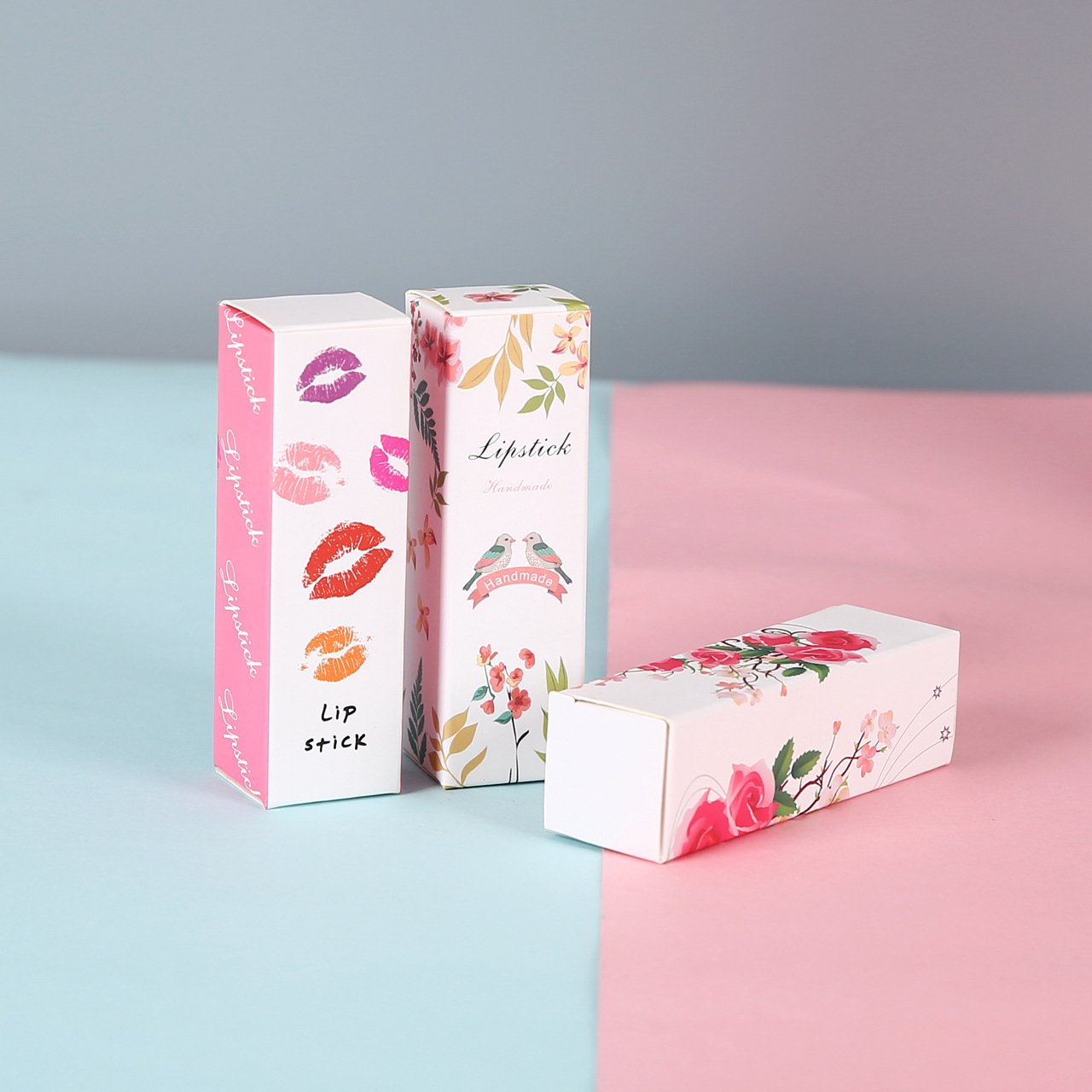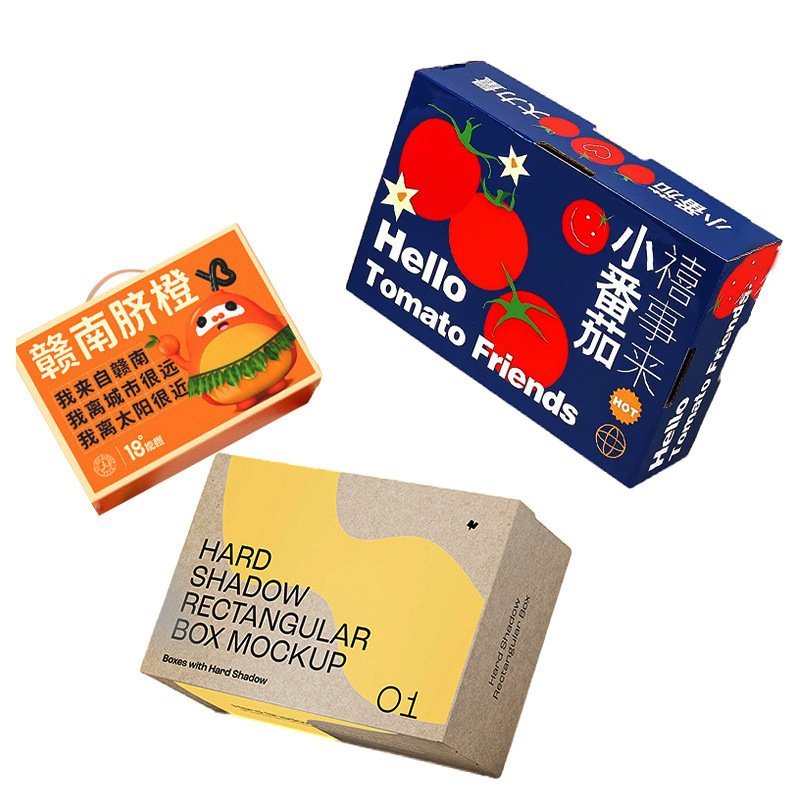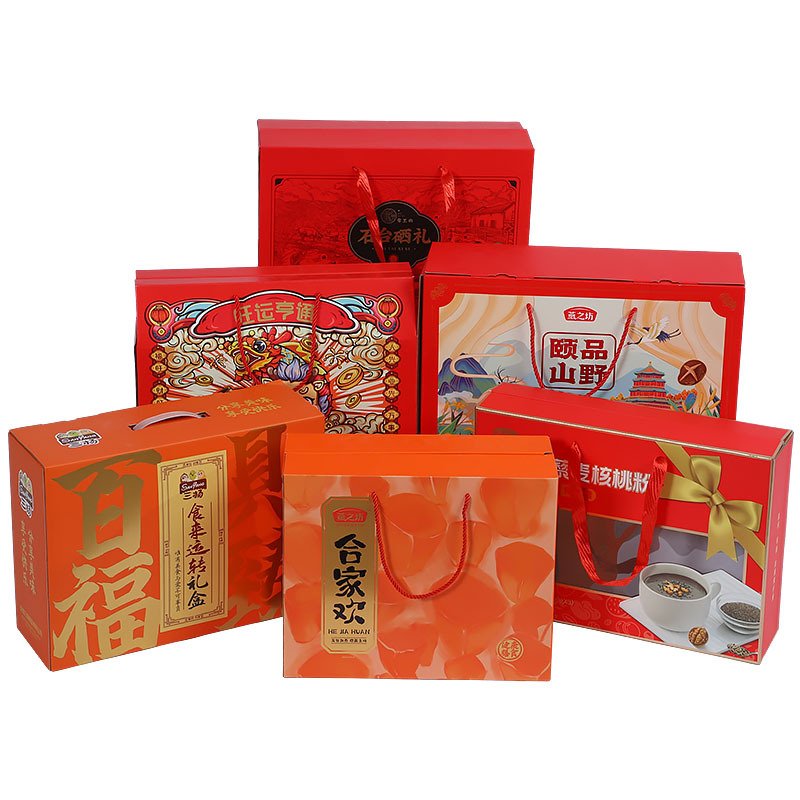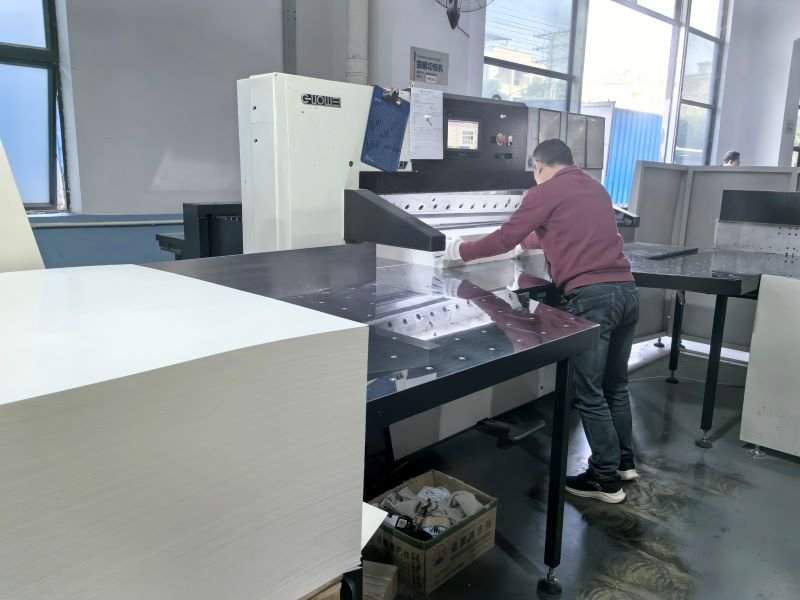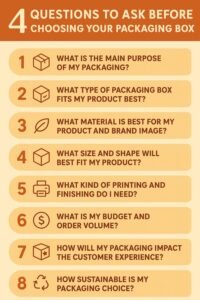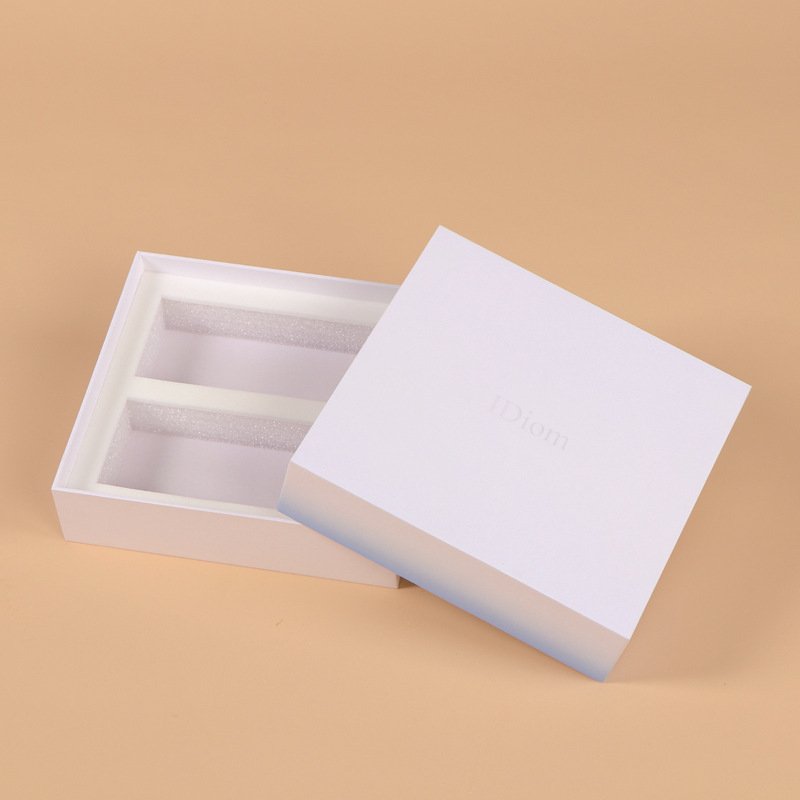In the world of packaging, finishing touches often make the difference between packaging that’s simply “okay” and packaging that feels premium, memorable, and brand-defining. One of those finishes that delivers such differentiated value is Spot UV (also called spot gloss UV finishing). When used properly, it brings contrast, texture, gloss, and a luxury tactile effect—helping logo, brand name, pattern or graphic elements “pop” off the packaging, elevating the unboxing experience and shelf presence.
As a paper-box manufacturer who’s worked with many brand clients, understanding Spot UV deeply—how it is done, when it makes sense, its costs and trade-offs—is essential. This blog lays out a thorough guide so you and your clients can make informed decisions.
1. What Is Spot UV Printing / Coating
Spot UV is not really a separate printing method (like offset or digital); rather, it’s a post-printing finishing technique. It involves applying a clear gloss varnish or coating (a UV-cured varnish) only to specific parts (the “spots”) of a printed surface—such as logos, text, images or patterns—while leaving the rest of the surface uncoated or with a matte finish. The “UV” refers to how the varnish is cured (hardened) using ultraviolet light.
Key attributes:
Creates contrast between glossy and non-gloss/matte areas. The high gloss areas reflect light differently, attract attention.
Can add a tactile feel—the gloss varnish is often slightly raised, so you can feel the difference. This helps the touch-sensorial part of packaging.
It’s selective: only certain parts are treated. That gives flexibility—focus on what matters (logo, title, accent elements) rather than coating the whole surface.
Because of these qualities, Spot UV is widely used for luxury packaging, cosmetics, premium food packaging, gift boxes, display packaging—places where appearance, perception, and unboxing or storefront presence are very important.
2. Process: How Spot UV Is Done
Here is a breakdown of how spot UV finishing is performed, what equipment is involved, and the steps from printing through finishing.
| Step | What Happens | Key Technical Aspects / Considerations |
|---|---|---|
| Base Printing | First, the printing of the artwork (color, images, text) is done—usually via offset, digital, or flexo etc. This establishes the background, colors, graphics on the substrate (paperboard, coated board, etc.). | Must ensure that color choices, registration, substrate qualities are finalized before UV finishing. Any misalignment will show between printed graphic and varnished area. |
| Preparation of Spot UV Mask (Job Layout) | A separate artwork layer is created (often black/white or a “spot” color in ready file) that defines exactly where the UV varnish should be applied. This mask indicates the “spots” (logo, text, shapes, patterns) for varnish. | Important that mask is precise. Usually vector format for sharp edges. Avoid too tiny or detailed areas where varnish or registration may blur. |
| Application of UV Varnish (Spot) | Using a screen or coating unit, only the masked areas receive the UV-varnish/varnish. This is a liquid varnish (clear) that sits on top of the printed or unprinted surface in these specific areas. | Coating thickness, registration (alignment) to printed art, the substrate’s ability to accept varnish matter. Control of overspray or varnish creep is important. |
| UV Curing | Once varnish is applied, the sheet passes under high intensity UV lamps which cure (harden) the varnish almost instantly. This gives gloss, durability, hardness. | The lamp strength, curing time, heat effect on substrate all need calibration. Over-curing can damage some substrates; under-curing causes tackiness or delayed hardening. |
| Finishing: Coating / Lamination / Cutting / Folding / Die-cut | After curing, the piece proceeds to finishing steps (die-cut, fold, glue, assemble). If coatings/lamination or embossing etc. are to be combined, this has to be planned. | Folding or scoring across UV areas may lead to cracking of varnish if varnished heavily over fold lines. Proper fold design, allowance, and possibly scoring before varnish may help. |
Because it’s a finishing step, spot UV must be compatible with the printing inks, inks drying, substrate preparation, and finishing operations.
3. Design & Material Considerations
To achieve good effect and avoid problems, you (and your clients) must pay attention to design, file preparation, substrate, and how the other finishing steps align.
3.1 Substrate (Board / Paper) Types & Surface
Spot UV performs best on smooth or coated surfaces: coated paperboard, gloss, satin, or matte coated boards. These surfaces allow the varnish to sit cleanly and gloss to be crisp.
Matte / soft touch / uncoated boards can work, but varnish adhesion, gloss contrast, and sharpness will be less perfect, and you may see uneven varnish absorption.
Boards must be dimensionally stable: avoid warping, heavy shrinkage, or surfaces that may lift varnish under folding or scoring. Thicker boards help for rigid boxes.
3.2 Artwork, Layout & Mask File
The designer should prepare two (or more) layers/files: one for base print (CMYK or spot colours etc.), another for the Spot UV mask (where varnish will go). The mask should have clean edges.
Spot UV works best with simple shapes, bold logos, text, or graphical elements. Very fine lines or very small text under varnish are at risk of blurring or bleeding.
Contrast between varnished and non-varnished area is key: darker or matte backgrounds make the varnish spots stand out more. Light color vs gloss effect trade-offs.
3.3 Structural & Finishing Alignment
When the varnish covers areas that will be folded, scored, or creased, careful design is needed to avoid varnish cracking or lifting. Sometimes lighter varnish, or avoiding varnish across fold lines, or combining varnish with scoring/partial creasing before applications help.
Die-cutting or trimming must be precise. If spot UV areas are too close to the cut/trim, mistakes or loss of varnish edge crispness may occur.
Consider combining Spot UV with other finishes: embossing, foil stamping, soft touch, lamination etc. But each added finish complicates process and cost.
3.4 Durability, Handling & Use
While spot UV adds gloss and some protection (scratch, moisture, smudge), varnished areas are more delicate than uncoated in certain respects — e.g. heavy abrasion, repeated folding, or rough transit may damage varnish.
Consider how the packaging is handled in shipping, retail display, customer use. For example, rigid gift boxes may display better, but mailer or corrugated outer packaging may incur scratches.
3.5 Volume, Detail and Fold / Score Impacts
If many spot UV areas or large varnish coverage, cost of varnish, laydown, curing, and handling increases. Also more risk in registration or varnish alignment.
For small batches or many variants, tooling/film for spot UV mask, setup etc. need consideration.
4. Advantages / What Makes Spot UV Attractive
Here are the key reasons why brands choose spot UV finishing—it delivers value that often justifies its cost when used appropriately. As a manufacturer, you should be ready to explain these benefits to clients.
Enhancement of Visual Appeal & Contrast
Spot UV introduces a glossy finish in selective areas, which contrast sharply with matte or less-gloss surfaces. This draws attention to logos, graphic details, highlights, making them more visible.
Tactile / Touch Experience
The raised, glossy varnish areas feel smooth and distinct, adding a sensory dimension—touch interacts with shine. This increases perceived quality and memorability.
Brand Differentiation & Shelf Presence
In retail, competition is stiff. Packaging that catches light, has texture, fine finishes, tends to stand out. Spot UV helps packaging “pop” under shelf lighting or display lighting.
Durability & Protection
The UV varnish provides some protection over the printed ink: it helps resist smudging, fingerprints, minor scratches. For packaging that will be handled or touched, this helps maintain visual quality.
Speed / Production Efficiency
Because UV varnish cures instantly under UV lamps, turnaround is quicker than some longer-drying coatings. Also, only the “spots” are coated—not the whole sheet—which saves time, varnish usage, and reduces wait/dry times.
Cost-Effective Luxury
Spot UV can offer a relatively modest cost increase compared to full special finishes, foil stamping etc., but still deliver high impact. Brands get a luxury look for less.
Design Flexibility
Clients can choose which elements to highlight—logo, slogan, patterns, images. Can combine with print, emboss, lamination. Can produce “blind” Spot UV (varnish on blank substrate without underlying print) as design element.
5. Disadvantages / Trade-Offs & Limitations
No finishing technique is perfect. Spot UV has trade-offs; knowing them helps avoid surprises, quality issues, or cost blow-outs.
Increased Cost & Tooling / Setup
There is cost in preparing the mask or varnish screen, registering the varnish, setup of UV curing, possibly adjusting printing and finishing flows. For small batches or many design variants, these setup costs may be significant.
Risk of Misregistration / Alignment Errors
Because spot UV must align precisely with printed artwork (or unprinted artwork), any shift, misalignment, or error in sheet feed, trimming, or mask registration can make the effect look poor.
Varnish Cracking or Lift on Folds / Score Lines
If the varnished areas are over fold lines or score lines, the varnish may crack or lift when the board is folded. Heavy varnish, thick layers, or poor substrate choice compound this.
Limited Suitability for Fine Detail / Small Text
Very fine lines or very small text under varnish may blur or lose sharpness. Also, in raised varnish versions, tactile “raised Spot UV”, micro-texture may fill or lose fine definition.
Surface Compatibility / Finish Constraints
On heavily textured, uncoated, or porous boards, varnish may sit unevenly, absorb too much, lose gloss, or show mottling. Some varnishes may not adhere well.
Durability Under Abuse
Although varnish adds protection, in rough handling (shipping, scratching, moisture) the gloss areas may show wear: scuff marks, loss of shine, micro-scratches.
Environmental / Recycling / Sustainability Issues
UV varnishes, though often solvent-free, may include chemicals or coatings that complicate recycling or degrade substrate recyclability.
Varnish overspray, waste of varnish, energy use of UV curing lamps, etc. contribute to environmental cost.
Some clients or markets may prefer minimal finishing for sustainability branding.
6. When and Where to Use Spot UV in Packaging
Understanding the right use cases helps ensure spot UV is used where it adds value, not simply as an aesthetic “extra” that may not justify cost.
| Scenario | Why Spot UV Makes Sense |
|---|---|
| Luxury / premium product packaging (cosmetics, perfume, jewelry) | The finish complements higher price point, enhances perceived value, aligns with premium brand identity. |
| Gift boxes, limited edition / seasonal packaging | When packaging is part of the gift experience; finishing that “wows” helps unboxing, photo appeal, brand prestige. |
| Logos / branding elements / key graphics | Use spot UV to highlight logo, brand name, signature pattern so that these parts stand out visually and texturally. |
| Matte or soft-touch finishes where contrast is desired | Spot UV adds gloss contrast against matte or soft textures, creating visual/tactile dynamic. |
| Small to medium runs where full foil or full gloss coatings are too expensive | Spot UV provides selective finish with less material, less cost than full gloss or foil stamping. |
| When speed of finishing and relatively fast turnaround is needed | UV curing is fast; only small areas varnished → less drying time, faster handling. |
Also, be careful about the following “don’t use” or “use with caution” scenarios:
Very small batches or many SKUs with variant designs (set-up cost multiplies)
Designs with very tiny, intricate detail where varnish may blur
Substrates that are deeply textured, very porous, very thin or that fold heavily
Environments / usage with heavy abrasion or risk of surface damage (e.g. shipping boxes that will be thrown, stepped on etc.)
7. Cost, Lead Time & Sustainability Implications
As finishing touches, spot UV influences cost, timeline, and environmental footprint. Understanding these helps you quote jobs properly and advise clients.
Cost Factors
Mask / Screen / Artwork prep (separate file)
Varnish material cost, especially if using special gloss levels or raised varnish
UV curing equipment cost (amortized) and setup time
Impact on finishing: trimming, die-cutting, folding, whether varnish areas need to avoid fold lines (which may constrain layout)
Potential wastage from misregistration, test runs
Lead Time Considerations
Time to prepare the spot UV mask file and proofing
UV varnish application and curing adds finishing steps beyond base printing
Folding, die-cut or other finishing operations may need alignment checks etc.
Sustainability / Environmental Impacts
Many UV varnishes are solvent-free and cure with ultraviolet light rather than long drying processes; this can reduce volatile organic compounds (VOCs).
Because only certain areas are varnished, less material used compared to full coatings.
However, varnish layers, chemical composition, recyclability of varnished surfaces must be considered especially if mixed with lamination, foil etc.
Energy consumption of UV lamps, waste from test sheets / misalignments must be managed.
8. Best Practices & Tips for Manufacturers & Brand Clients
To maximize value, reduce risk, and produce high-quality packaging with spot UV, here are best practices you should implement and suggest to your clients.
Early Design Integration
Include spot UV in early design phases so layout, dielines, folding, and branding align with varnish. Planning prevents last-minute corrections or awkward placements.
Artwork & Mask File Quality
Ensure mask (spot UV layer) is vector, clean, with correct registration. Distinct layer. Name layers clearly (e.g. “SpotUV”). Indicate varnish coverage for folds or shadows.
Substrate Sample Tests
Before selecting substrate for a large order, do test runs on the board with the spot UV mask, fold, die cut. Examine gloss, adhesion, clarity, any cracking or peeling.
Limit Varnished Areas / Use Contrast Wisely
Use spot UV selectively—logo, accent details—rather than varnishing many areas, which may reduce impact and cost-efficiency. Contrast backgrounds (matte/darker) help varnish shine more.
Avoid Varnish Across Fold/Score Lines If Possible
If varnish must cross a fold or score, use lighter varnish or ensure fold/scoring is done such that varnished areas are supported to avoid cracking.
Quality Control & Registration Control
Monitor that varnished areas align properly, edges sharp. During production, inspect first sheets, test registration, check gloss level, sheen, consistency across sheets.
Finishing Order Matters
Usually printing → spot UV varnish → finishing (die-cut, fold, assemble). Ensure varnish cured before further handling.
Manage Packaging Handling & Protection
After spot UV finishing, protect varnished surfaces during storage, transport, packing. Use covers / wrapping as necessary so varnish isn’t scratched or marred.
Educate Clients on What to Expect
Show sample boards, examples of spot UV on different substrates, show how gloss changes under different lighting. Align expectations especially around cost, durability, finish.
Offer Tiered Options
For clients who want premium effects but have budget constraints, offer levels: for example basic spot UV (small areas), raised varnish, more coverage, combined varnish + emboss etc. Allow clients to see trade-offs.
9. Examples & Case Studies
Some examples to illustrate how spot UV has been used in packaging contexts, what worked, and lessons learned.
Case Study A: Beauty / Skincare Folding Carton
A high-end skincare brand wanted its logo and product name to “shine” on a soft matte finish folding carton. The rest of the carton was matte soft touch, in pastel tones.
They used spot UV on the logo, brand name, a decorative frame. On pastel background, gloss contrast was strong. Careful not to varnish over fold lines; used prototyping, correct masking. Result: very strong shelf impact; customers perceived product as luxury.
Case Study B: Gift / Premium Food Box
A confection brand released limited gift-edition chocolate boxes. They used rich dark matte background with spot UV pattern (floral design) overlay in repeated elements; logo also varnished. Slightly raised varnish was used for texture.
Varnished areas were limited, so cost increase manageable. The boxes photographed well (important for gift packaging / social media). However, some minor scratching noticed on varnished portions in transit, so packing inside shipping cartons was done carefully.
Case Study C: Electronics Accessory Packaging
A brand packaging small gadgets (e.g. phone accessories) used spot UV on the product name and certain graphics to give gloss accents. Substrate: coated board. Base print was offset. Spot UV applied, then finishing (cut/fold).
Benefit: improved perceived quality; small cost increase. They avoided varnish over folding edges, and used protective inserts to reduce abrasion in shipping.
10. Summary & Strategic Recommendations
To wrap up, here are the major take-aways, and recommended strategic approaches you can adopt as a manufacturer, and advice to offer your clients.
Spot UV is a powerful finishing option that adds gloss, contrast, texture, tactile feel, and premium visual impact to packaging boxes.
It works especially well on smooth or coated substrates, with well-prepared mask/artwork, and when used selectively.
Weigh the trade-offs: cost vs perceived value; durability vs possible vulnerability to handling; setup and alignment demands; environmental considerations.
For your client projects, consider offering multiple levels: e.g. “standard finish” vs “premium spot UV highlight” vs “raised varnish” vs combined finishes. This gives clients flexibility.
Always prototype and proof: especially for new substrates; check folding/score/trim behavior; photograph under different lighting; test shipping durability.
Keep careful registration and finishing control; ensure varnish cured properly before further handling.
In markets where luxury / premium appearance matters strongly (cosmetics, gift packaging, high-end food or beverage, boutique brands), spot UV often pays back in perceived value, customer satisfaction, and brand differentiation.
Also stay aware of environmental expectations: using varnishes that are VOC-free or UV cured, managing varnish waste, choosing recyclable/coated substrates that work well, communicating sustainability where possible—clients increasingly care.
About BM Paper Box Manufacturer
We are a professional paper packaging box customization factory with ten years of industry experience. We focus on providing customers with high-quality customized packaging solutions, covering consumer electronics, medical equipment consumables, cosmetics and other fields, with ingenious design and exquisite technology, to add infinite charm to customers’ products.
As a professional paper packaging box customization factory, our service range is wide, covering consumer electronics, medical equipment consumables, cosmetics and other fields. Whether it is the exquisite gift box of high-end consumer electronics, the professional packaging of medical equipment, or the fashion outer box of cosmetics, we can tailor the most suitable packaging solution according to the needs of customers and the characteristics of the product. Our professional strength has been recognized by many brand customers and become their trusted partner.
Why Choose BM Paper Box Factroy
HIGH END QUALITY:As one of the best customized paper box manufacturer in china, our QC team will ensure every single product you receive are best quality. We have professional quality testing machine.
PRODUCT DESIGN:Our sampling department has complete process of making drawings into reality. We also improve your product design based on our years of working experience.Tell us what you think.
STABLE DELIVERY TIME:As the best gift box manufacturer & supplier,we have sufficient manufacturing capacity, big orders won’t beat us, we can still deliver the order for you in time.
BEST PRICE:We are source factory of paper boxes and the best manufacturer in China, that’s why we can provide high quality bags with best price.
PRECISE MANAGEMENT:Nothing can be achieved if we don’t implement precise management. We are a company with complete management system.
7-24 SERVICE:As the best paper box manufacturer, 24-7 immediate response: We’ll receive your feedback to make us a better supplier.contact us(+86 18925520049)
FAQs About BM Paper Box
We are a Chinese top manufacturer and our factory is located in Dongguan. Welcome to visit our factory!
• We are a professional paper packaging product provider, especially in the gift packaging field. We can produce kinds of paper boxes and paper bags for multi-purpose.
• We provide one-stop services and accept custom designs as your requirements.
•Of course, usually we will provide free samples, and you only need to cover the freight. For custom printed samples, pls send your requirements to us for checking the sample cost.
• It takes about 7 days for sample production.
Yes, we provide free design services, structural design and simple graphic design.
Sure. We can do any packaging with your design. Now we open a ODM packaging which is for small quantity from 100pc to 500pc,but you can still have your own logo.
Depending on the order quantity and production details, it will take about 15 to 20 days.
Always a pre-production sample before mass production; Always final Inspection before shipment
• Size, material, printing details, quantity, shipping destination, etc.
• You can also just tell us your requirements and we will recommend products to you.
• By sea, by air or by express.
• If you have your own freight forwarder in China, it is the ex-factory or FOB price.
•CFR or CIF, etc., if you need us to ship on your behalf.
• DDP and DDU can also be used.
• More choices, we will consider your choices.
• The price is determined by the quantity, material, processing method, size and other factors. In addition, due to our continuous
technological innovation, the prices of some of our products are extremely competitive, please contact us to quote.

